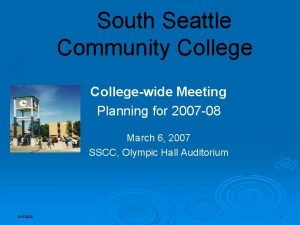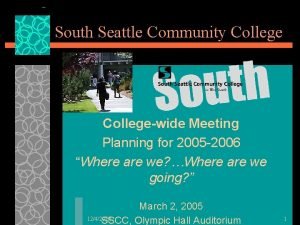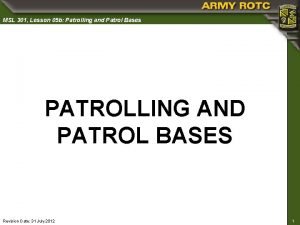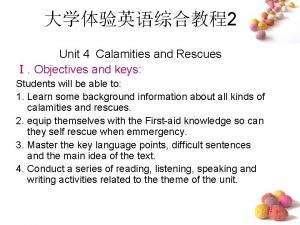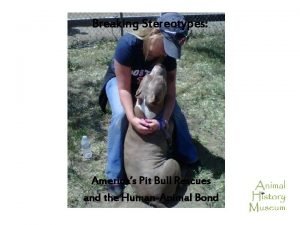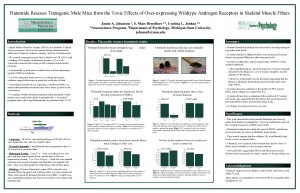Chapter 7 Emergency Rescues Moves and Priorities Emergency












- Slides: 12

Chapter 7 Emergency Rescues, Moves, and Priorities

Emergency Rescues: What to Do • Water – Try the following in the order listed: 1. Reach with a pole. 2. Throw anything that floats. 3. Row, if a boat is available. 4. Go, if trained in swim rescue. • Ice 1. Reach with a pole. 2. Throw a line.

Emergency Rescues: What to Do • Electricity – Indoors 1. Turn off the electricity. – Outdoors 1. High-voltage electricity requires trained personnel. • Motor-vehicle crash 1. Park in a safe place. 2. Turn on flashers. 3. Place flares or reflectors 250 to 500 feet behind the crash.

Emergency Rescues: What to Do • Fire 1. Get people out of the area. 2. If it is a small fire, use a fire extinguisher if you can easily escape. • Hazardous materials 1. Stay out of the area. 2. If outside, stay upwind. • Confined space 1. Only those with proper training and equipment should enter the area.

Emergency Rescues: Scenario You are fishing at a lake. Several swimmers and others in canoes are also enjoying the lake. One swimmer decides to swim to the other side of the lake but begins to struggle about 30 feet off shore.

Emergency Rescues: Agree or Disagree? 1. Throw an empty 5 -gallon water container to a distressed person in deep water. 2. The first thing to do in case of a fire is to use a fire extinguisher and try to put out the fire. 3. Move downed power lines away from a person by using a broom handle or other wooden object. 4. Move away from strong, unusual odors or clouds of vapor. 5. Do not attempt rescues from collapsed structures unless you have the proper training and equipment.

Emergency Moves • One-rescuer moves Human crutch Cradle carry Pack-strap carry Piggyback carry Firefighter’s carry Shoulder drag Ankle drag Blanket drag – – Two-person assist Two-handed seat carry Extremity carry Chair carry © Jones & Bartlett Learning. Courtesy of MIEMSS. – – – – • Two-rescuer moves

Prioritizing Multiple People • When many people are injured, use a process called triage to distinguish among: – Those needing immediate care for one of the three “killers”—closed airway, severe bleeding, and shock – Those who can wait for care until after others have been triaged – Those who are deceased (dead)

Conducting Triage 1. Conduct a voice triage by calling out, “If you can walk, come to me. ” – – Place people who can walk in the “delayed” category. Direct them to a designated safe area; have them sit down and stay together.

Conducting Triage 2. Start surveying each person who did not get up and walk. – – – Begin with the person closest to you. Quickly get to each person and sort each by his or her need for care (immediate, delayed, dead). DO NOT stop to treat anyone during triage except to quickly open the airway and control severe bleeding.

Prioritizing Multiple People: Scenario At a busy intersection, you see a crash involving a truck and a minivan. The truck’s driver says the minivan ran a red light, and he was unable to stop before hitting it. He tells you there are several people in the minivan and they all look seriously hurt. You open the minivan’s sliding door and see three people. One appears to be unresponsive; another is under the dashboard and yelling for help; and the third person is staring blankly and trying to talk.

Prioritizing Multiple People: Agree or Disagree? 1. Take up to five minutes person when sorting multiple people for medical care. 2. Remove an impaled object stuck in an arm or leg if found during triage. 3. Splint a suspected broken arm if found during triage. 4. Separate the people who are able to walk on their own and keep them together. 5. Do not start CPR or cool a burn during triage.
 Executive order 12919
Executive order 12919 Goals and priorities
Goals and priorities Goals and priorities
Goals and priorities Goals and priorities
Goals and priorities Goals and priorities
Goals and priorities America moves toward war section 4
America moves toward war section 4 Chapter 24 section 4 america moves toward war
Chapter 24 section 4 america moves toward war Chapter 25 america moves to the city
Chapter 25 america moves to the city Chapter 25 america moves to the city
Chapter 25 america moves to the city Chapter 25 america moves to the city
Chapter 25 america moves to the city Volkswagen case study ppt
Volkswagen case study ppt Core sta
Core sta Priorities of work army
Priorities of work army

